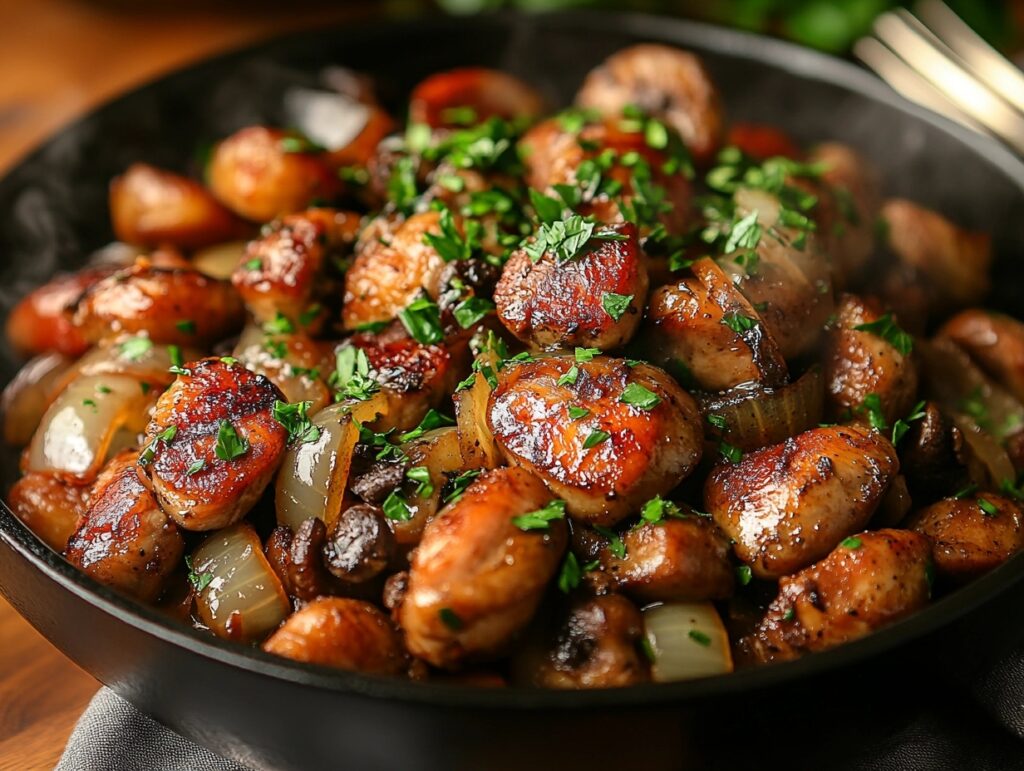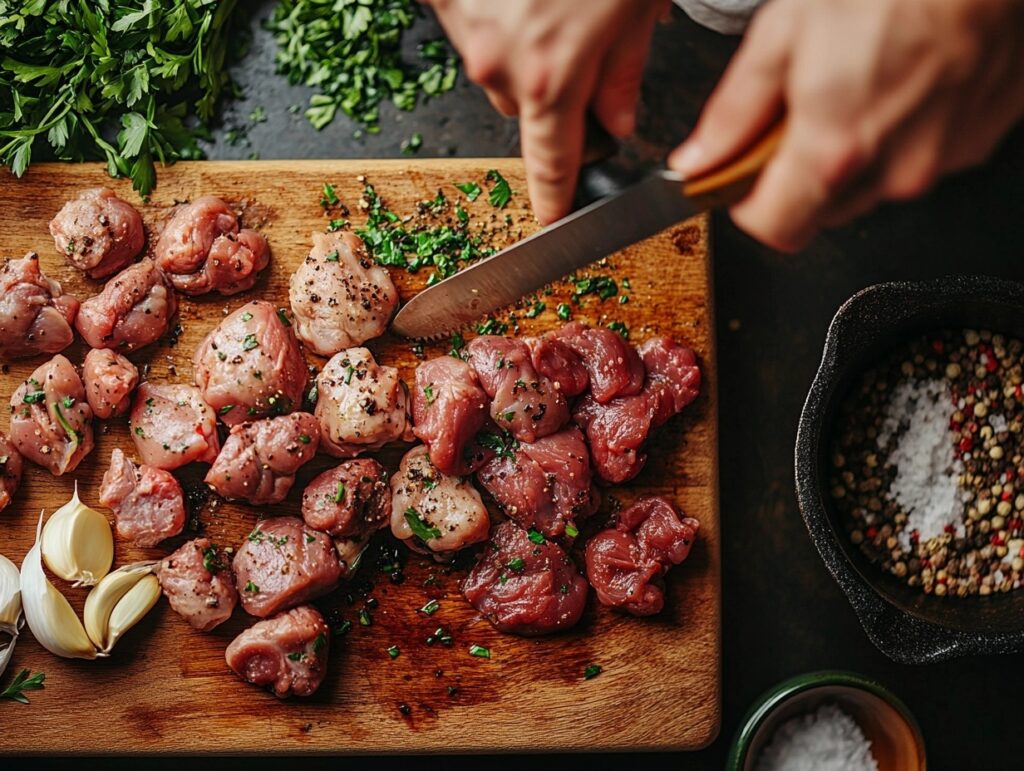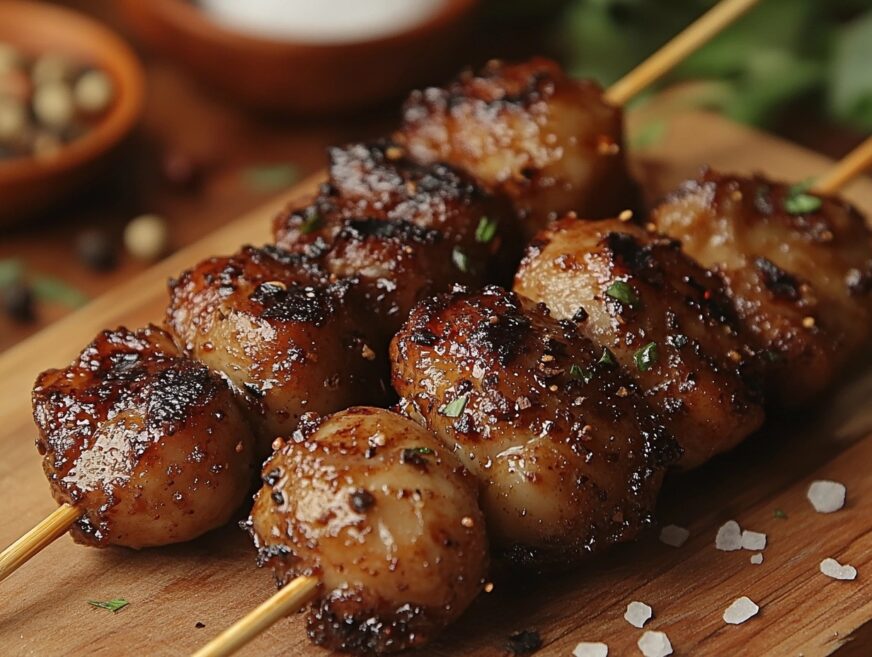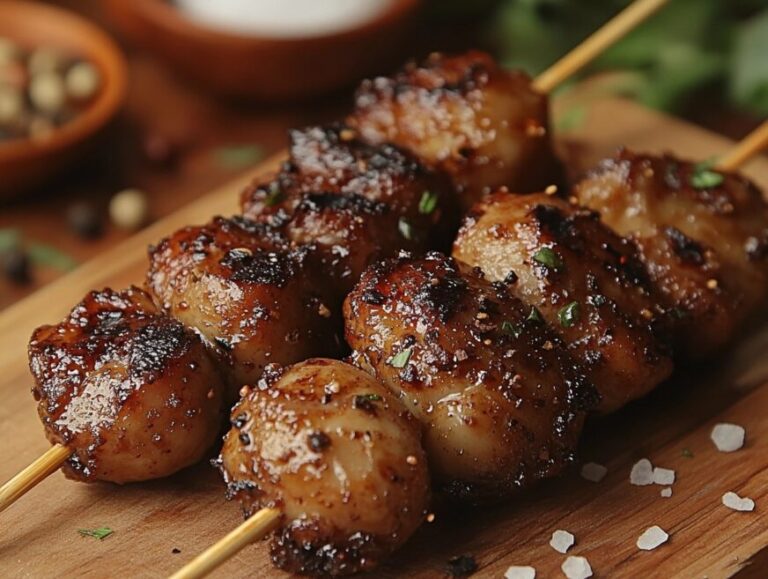Table of Contents
When it comes to nutritious, affordable, and delicious ingredients, few things compare to chicken hearts. These tiny yet mighty organ meats have been cherished in traditional cuisines worldwide for centuries. Whether grilled on skewers in Brazilian churrasco, stir-fried in Asian dishes, or simmered in hearty stews, chicken hearts bring a rich umami flavor and a tender bite to the table.
But that’s not all—they’re also packed with essential nutrients, making them a superfood in disguise. In this article, we’ll explore the nutritional benefits of chicken hearts, how to cook them, potential health concerns, and why they deserve a spot in your diet. Whether you’re a food enthusiast looking for unique ingredients or someone aiming for a healthier diet, this guide has everything you need to know.
Let’s start by understanding exactly what chicken hearts are and why they’ve been a staple in many cultures.
Introduction to Chicken Hearts
What Are Chicken Hearts?
Chicken hearts are small, muscle-like organs found in poultry, particularly chickens. They belong to the category of giblets, which also includes the liver, gizzards, and other edible internal parts. Despite their small size, they have a firm yet tender texture and a mild, slightly gamey flavor that absorbs seasonings beautifully.
Unlike other organ meats, chicken hearts are composed mostly of muscle, making them similar in texture to dark meat chicken but with a richer taste. They’re typically sold fresh or frozen in butcher shops and supermarkets, often alongside other poultry giblets.
Cultural Significance of Chicken Hearts in Global Cuisines
Chicken hearts have long been embraced in traditional cuisines around the world. In Brazil, they are a barbecue staple, skewered and grilled over open flames, often seasoned simply with salt and garlic. Japanese cuisine incorporates them into yakitori, where they’re grilled on sticks and basted with a sweet-savory soy glaze.
In the Philippines, chicken hearts appear in adobo dishes, cooked with vinegar, soy sauce, and spices. In many European and Middle Eastern countries, they’re found in hearty stews, sautéed with onions, or even stuffed into sausages.
Their versatility and unique umami depth make them a prized ingredient across continents. But beyond taste, what really makes them special is their impressive nutritional profile, which we’ll explore in the next section.
Nutritional Profile of Chicken Hearts
Macronutrient Composition
Chicken hearts are a powerhouse of nutrition, offering a remarkable macronutrient profile. A 3.5-ounce (100-gram) serving provides approximately 183 calories, 26 grams of protein, 8 grams of fat, and minimal carbohydrates. This high protein content makes them an excellent choice for those aiming to build or maintain muscle mass.
Vitamins and Minerals
Beyond macronutrients, chicken hearts are rich in essential vitamins and minerals. They are particularly abundant in B vitamins, especially B12, which supports red blood cell production and neurological health. Additionally, they offer significant amounts of iron, zinc, and coenzyme Q10 (CoQ10), all of which play crucial roles in energy production and immune function.
Health Benefits of Consuming Chicken Hearts
Incorporating chicken hearts into your diet can yield several health benefits. The high-quality protein supports muscle repair and growth, while the rich B12 content aids in maintaining healthy nerve cells. The presence of CoQ10 is beneficial for heart health, as it helps in energy production within cells and acts as an antioxidant. Moreover, the iron in chicken hearts can help prevent anemia by supporting adequate hemoglobin levels.
Culinary Uses of Chicken Hearts

Traditional Dishes Featuring Chicken Hearts
Chicken hearts have been cherished in various traditional cuisines around the globe. In Brazil, they are a staple in churrasco (barbecue), often skewered and grilled to perfection. Similarly, Japanese cuisine features hāto yakitori, where chicken hearts are grilled on skewers and seasoned with tare sauce or salt. In the Middle East, particularly in Jerusalem, a mixed grill known as Meorav Yerushalmi includes chicken hearts, liver, and spleen, all seasoned and cooked together.
Modern Recipes and Cooking Techniques
In contemporary cooking, chicken hearts are gaining popularity for their versatility and rich flavor. They can be sautéed with onions and mushrooms for a quick and nutritious dish. Marinating and grilling them adds a smoky depth, making them a delightful appetizer. Incorporating chicken hearts into stews or stir-fries enhances the meal’s protein content and introduces a unique texture.
Flavor Profile: What Do Chicken Hearts Taste Like?
Chicken hearts boast a distinct flavor that is both rich and meaty. Their taste is often described as a cross between dark chicken meat and liver, offering a slightly gamey yet palatable experience. The texture is firm but tender, making them a satisfying addition to various dishes. Their ability to absorb marinades and seasonings allows for a wide range of flavor profiles, catering to diverse culinary preferences.
By exploring these culinary applications, you can appreciate the versatility and depth that chicken hearts bring to the table. Whether rooted in tradition or modern innovation, dishes featuring chicken hearts offer both nutritional benefits and delightful flavors.
How to Cook Chicken Hearts

Preparation and Cleaning
Before cooking chicken hearts, it’s crucial to clean them properly. While they are generally sold ready to use, some may still have bits of fat, veins, or connective tissue attached. Here’s how to prepare them:
- Rinse thoroughly – Place the hearts in a colander and rinse them under cold water to remove any residual blood.
- Trim excess fat – Use a sharp knife to remove any visible fat or tough connective tissue.
- Slice or leave whole – Depending on the recipe, you can leave the hearts whole for grilling or slice them in half for quicker cooking.
Once cleaned, pat them dry with a paper towel before seasoning or marinating.
Popular Cooking Methods
Chicken hearts can be cooked in various ways, each method enhancing their rich and meaty flavor. Here are some of the best ways to prepare them:
- Grilling – Skewered and grilled over an open flame, chicken hearts develop a smoky, charred exterior while staying juicy inside. A simple seasoning of salt, pepper, and garlic works wonders.
- Sautéing – Quick and easy, sautéing chicken hearts in butter or olive oil with onions, garlic, and spices results in a deliciously tender dish.
- Stir-Frying – When cooked at high heat with soy sauce, ginger, and vegetables, chicken hearts absorb bold flavors and retain a slight chewiness.
- Slow Cooking – Simmering them in stews or soups allows the meat to become incredibly tender and flavorful.
- Frying – Coating chicken hearts in seasoned flour and frying them creates a crispy exterior while keeping the inside moist and juicy.
Tips for Enhancing Flavor and Texture
- Marinate for better taste – Let chicken hearts sit in a marinade for at least 30 minutes to absorb flavors fully.
- Cook quickly over high heat – This prevents them from becoming tough or rubbery.
- Pair with bold flavors – Chicken hearts complement strong spices, garlic, vinegar, and umami-rich ingredients like soy sauce and Worcestershire sauce.
If you’re interested in ethical meat choices, check out our sustainable eating guide for more tips on making informed food decisions.
Potential Drawbacks and Considerations
Health Concerns Related to Organ Meats
While chicken hearts are packed with nutrients, they should be eaten in moderation. Organ meats, in general, are high in cholesterol, which may not be ideal for individuals with heart disease or high cholesterol levels. However, recent studies suggest that dietary cholesterol has a minimal effect on blood cholesterol for most people.
Another concern is vitamin A toxicity, though this is more common with liver consumption rather than hearts. Since chicken hearts contain iron and purines, excessive intake may pose risks for people prone to kidney stones or gout.
Ethical and Sourcing Considerations
Not all chicken hearts are created equal. When possible, opt for organic, pasture-raised, or free-range poultry to ensure you’re consuming meat free from antibiotics and hormones. Additionally, buying from local butchers or farmers’ markets supports sustainable practices and guarantees fresher, higher-quality meat.
If you’re interested in ethical meat choices, check out our sustainable eating guide for more tips on making informed food decisions.
Up next, we’ll answer some frequently asked questions about chicken hearts!
Frequently Asked Questions About Chicken Hearts
Is Eating Chicken Heart Good for You?
Absolutely! Chicken hearts are packed with high-quality protein, essential vitamins, and minerals that support overall health. They are particularly rich in vitamin B12, iron, and zinc, all of which contribute to a healthy immune system, red blood cell production, and proper nerve function. Additionally, they contain Coenzyme Q10 (CoQ10), an antioxidant that supports heart health and energy production. However, like all organ meats, moderation is key due to their cholesterol content.
Are Chicken Hearts Any Good?
Yes! Chicken hearts are not only nutritious but also delicious. Their flavor is often compared to dark chicken meat, but with a slightly more intense, meaty taste. Their unique texture—firm yet tender—makes them a great addition to various dishes. Whether grilled, sautéed, or slow-cooked, they absorb seasonings beautifully and add a rich depth of flavor to any meal.
What Does a Chicken Heart Taste Like?
Chicken hearts have a mild, slightly gamey flavor, somewhat similar to chicken thighs but with a richer umami depth. They have a firm texture when cooked quickly at high heat and become tender and succulent when simmered or slow-cooked. Since they absorb marinades and spices well, their taste can vary depending on the preparation.
How to Cook the Heart of a Chicken?
There are many ways to cook chicken hearts, but the most popular methods include:
- Grilling – Skewered and cooked over an open flame for a smoky, charred flavor.
- Sautéing – Quick and easy, ideal for stir-fries or serving with garlic and herbs.
- Slow-Cooking – Perfect for stews, soups, and braises to make them incredibly tender.
- Pan-Frying – Creates a crispy, flavorful exterior while keeping the inside juicy.
Experimenting with different cooking techniques allows you to enjoy chicken hearts in a variety of ways!
Conclusion
Chicken hearts are an underrated superfood that offer a fantastic combination of nutrition, affordability, and flavor. Whether you’re looking for a high-protein meal, a budget-friendly ingredient, or a way to explore global cuisine, chicken hearts are worth adding to your diet. Their rich levels of B vitamins, iron, and CoQ10 make them a great choice for energy and overall well-being.
From traditional grilled skewers in Brazil to hearty stews in Eastern Europe, chicken hearts have been a staple in many cultures for good reason. They are versatile, easy to cook, and absorb seasonings beautifully, making them an excellent ingredient for both classic and modern recipes.
However, like all organ meats, moderation is key. While they provide numerous health benefits, consuming them as part of a balanced diet ensures you get the best nutritional value without excess cholesterol or purine intake.
If you haven’t tried chicken hearts yet, now’s the perfect time to give them a chance! Whether you sauté, grill, or slow-cook them, they’re sure to surprise you with their rich flavor and tender texture.
For more delicious and nutritious recipes, check out our recipe collection and start exploring new flavors today!

Sautéed Chicken Hearts
Ingredients
Equipment
Method
- Rinse the chicken hearts thoroughly under cold water. Trim any excess fat or connective tissue if necessary.
- Heat olive oil in a skillet over medium-high heat.
- Add the chopped onion and sauté for 2-3 minutes until softened.
- Stir in the minced garlic and cook for another 30 seconds until fragrant.
- Add the chicken hearts to the skillet and stir well to coat them with the aromatics.
- Season with salt, black pepper, and paprika (if using). Cook for about 10 minutes, stirring occasionally, until the hearts are browned and cooked through.
- Drizzle with soy sauce (if using) and mix well for an extra depth of flavor.
- Remove from heat and garnish with fresh parsley.
- Serve hot with rice, roasted vegetables, or as a protein-packed snack.

